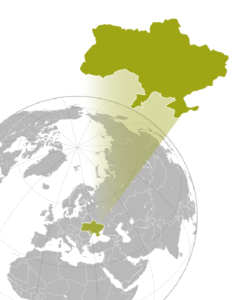Project Dates: September 2012 – June 2017

Background
The largest country in Europe, Ukraine has a population of approximately 42.5 million. It inherited a centralized, inflated, and underfunded health care system from the former Soviet Union.
Ukraine has the most severe HIV epidemic in Eastern Europe and Central Asia and the second highest TB burden in Europe. According to Ukraine’s MOH[1], TB is the leading cause of death from infectious diseases, with an incidence of 89 per 100,000, and 16% of newly detected cases present with multidrug-resistant TB (MDR-TB). UNAIDS estimated that 230,000 people were living with HIV in 2012. Ukraine has the highest mortality rate from infectious diseases in the WHO/Euro region[2], with TB, HIV, and AIDS accounting for 90% of all deaths[3].The HIV prevalence among adults was 0.9%[4] and approximately 100,000 people were in need of antiretroviral therapy (ART), while only 38,082 were receiving ART.
Since 2011, the USAID-funded SIAPS Program has been providing technical assistance in pharmaceutical management and systems strengthening for the HIV and TB programs as well as for reforms to enhance transparency and reduce corruption in Ukraine’s pharmaceutical sector. USAID provided USD 7.2 million over a five-year period to strengthen Ukraine’s pharmaceutical systems.
Project Highlights
Streamlining Medicine Selection
Public procurement of medicines is a major source of corruption in Ukraine and has resulted in inefficient spending of public funds and affected access to medicines for the treatment of common diseases. State procurements were vulnerable to duplication, inefficiency, and conflicts of interests or corruption due to multiple, nonharmonized lists.
Building Institutional Capacity
The management of pharmaceutical information is essential for curbing the spread of TB. The MOH adopted e-TB Manager as the national TB registry in 2015 and trained 21 power users from regional TB facilities, who then provided training at all facilities supported by the Ukrainian Center for Disease Control (UCDC).
Improvement of Procurement Practices
SIAPS supported the implementation of framework contracting to improve procurement practices in two oblasts.
Improving Pharmacovigilance Systems
Ukraine has made significant progress in establishing systems and processes to improve medicine safety. However, challenges remain related to monitoring and reporting adverse drug reactions (ADRs) and lack of efficacy (LOE) of drugs.
Drug Utilization Reviews
Drug utilization reviews (DURs) offer a means to analyze rational medicine use and provide valuable data for decision making on service enhancement. SIAPS carried out a DUR pilot in Ukraine in 2015 that highlighted improvements and challenges for medicine use in the country.
Results
New EML Adopted
The new national EML was adopted by the Government of Ukraine in March 2017 and will take effect July 1, 2017, as the sole list of medicines eligible for public procurement.
Reimbursement Program Launched
The Affordable Medicines state reimbursement program[5] was made possible with technical support from SIAPS. As of April 2017, the program covered 21 essential medicines for cardiovascular disease, type 2 diabetes, and asthma.
Health Care Reform
SIAPS has contributed to health care reform in Ukraine by providing technical assistance for policy development, capacity building, and governance improvements. SIAPS supported the development of the national medicines policy[6], a concept paper for health care financing reform[7], and a concept note on reforming public procurement of medicines[8].
National Supply Chain Assessment
SIAPS also led the National Supply Chain Assessment, which provided a comprehensive picture of the capability and performance of the national medicine supply chain and recommendations for improving medicine logistics in Ukraine.
Improved TB Patient and Program Management
With the national rollout of e-TB Manager, the time needed to prepare facility-, regional-, and national-level TB reports decreased from several days to one to two hours, and compliance with national quarterly reporting guidelines increased from 77% to 98%.
Governance Improved
Major achievements in framework contracting include educating a wide audience, creating a favorable environment for framework contracting, and improving the policy and regulatory climate.
Rational Medicine Use Improved
The new level of cooperation among national stakeholders will enhance rational medicine use. Before the DUR, stakeholders were not aware of one other’s roles. Following the pilot in the TB Dispensary, two regional AIDS Centers have begun participating in the DUR, and awareness of and coordination among stakeholders have increased significantly.
Legacy
SIAPS has played a key role in helping Ukraine strengthen its pharmaceutical system through improved governance and setting policies that will enhance the availability of quality-assured medicines to treat common ailments, including infectious diseases.

